Talalay’s Terrors! The Director Breaks Down Her 5 Scariest Scenes
We talked to director Rachel Talalay about her scariest scenes from TV and film, including Doctor Who and 90s sci-fi horror Ghost in the Machine.
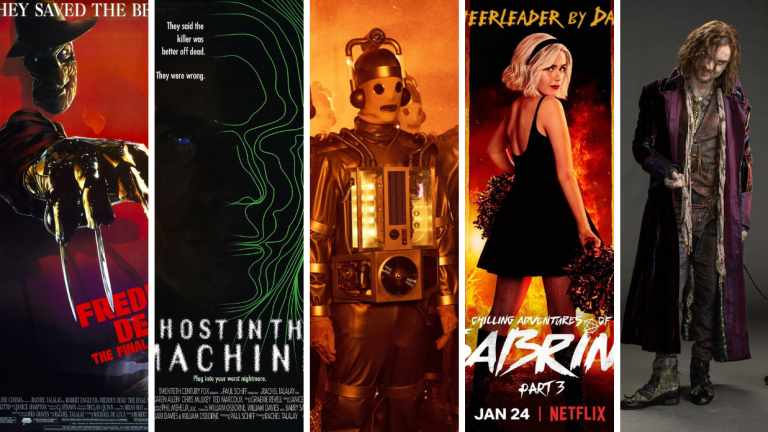
Rachel Talalay knows horror. The British-American filmmaker got her directorial start with 90s horror flicks Freddy’s Dead: The Final Nightmare and Ghost in the Machine before helming cult classic Tank Girl. In the last few decades, she has directed dozens of TV episodes that dip or full-on dive into That Most Chilling Genre. From Doctor Who and Doom Patrol to Supernatural and The Chilling Adventures of Sabrina, Talalay has been asked to tell many a spooky story.
Talalay’s latest, A Babysitter’s Guide to Monster Hunting is a feature film adaptation of the kids comedy horror book series from Joe Ballarini, and it drops on Netflix today. In honor of the occasion and of the Halloween season, of course, we talked to Talalay about five of the scariest scenes she’s ever directed.

Freddy’s Dead: The Final Nightmare (1991) — Carlos’ Q-Tip Death
Film synopsis: In this sixth film in the classic horror series, Freddy Krueger (Robert Englund) returns with a new target for his terror. After having slaughtered more or less every child in his hometown, Krueger finds new prey in the town where his long-lost daughter works as a therapist for troubled youths.
The scene: Freddy dream-tortures deaf teen Carlos (Ricky Dean Logan) by putting a Q-tip through his ear. In the sequence that follows, Freddy turns sound itself against Carlos, turning his hearing aid device up so that every sound is magnified 1,000-fold until poor Carlo’s head explodes.
Talking to Talalay: “The most important thing is how you’re setting things up,” says Talalay of good horror. “I like this scene because I like the way we build on him not being able to hear, and the way we start with the water drop, and then do the pin, and then do multiple pins, and lead that into the blackboard and the nails on the blackboard.”
Part of the scene’s set-up sees Freddy sticking a Q-tip in Carlos’ ear until it comes out the other side. It’s the kind of horror that plays on a mundane anxiety, says Talalay. “There’s something about [it], says Talalay. “You’re always told, ‘Be careful of Q-tips, you might hurt yourself. Don’t put Q-tips in your ears.’ It’s something we’ve all done and touched on. That’s another reason it works really well.”
Talalay, who has been using the quarantine to go through her troves of production keepsakes, pulls the Freddy’s Dead script out during our Zoom interview. “There were certain things that were in the script that surprised me,” says Talalay, using the example of Freddy’s popping up behind Carlos during his torture sequence, one instance of the villain having a much campier quality than previous films in the franchise.
“It directly says in the script, ‘Freddy is really enjoying mugging it,'” says Talalay. “[It] directly uses the word ‘mugging’ behind Carlos. And I thought, ‘Okay, that’s why I did that.’ Because there’s a version of it where Freddy just pops up, there’s a really scary version of it. So I was paying attention to the script, which is what I was paid to direct.”
Horror lesson: Q-tips aren’t worth the risk.
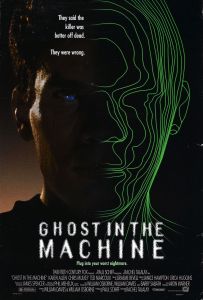
Ghost in the Machine (1993) — Microwave Murder
Film synopsis: When Karl (Ted Marcoux), aka “The Address Book Killer,” gets in a car accident and is brought to the hospital, his soul is transferring into a computer through the MRI machine. As an artificial intelligence, Karl continues his killing spree using various objects connected to the electrical grid and computer networks. He is… a ghost in various machines.
The scene: Using the address book of protagonist Terry (Karen Allen), Karl goes after Terry’s boss, Frank Mallory (Richard McKenzie), taking him out using his own microwave oven.
Talking to Talalay: The “microwave murder” sequence starts with our ghost, Karl, finding his victim, Frank, through a network of computers. As viewers, we are inside the computer hardware, in a series of visually ambitious shots that utilize Talalay’s background as a computer programmer.
“There’s a really beautiful, for the time, sequence where we’re inside the computer trying to bang against the computer and glitching the computer,” says Talalay, “which is really funny because he’s on the TWA website. Then we watch him travel through the wires, and we do this macro stuff through the wires. And then on the outside of the wires, and through the plug hole, and into the microwave.”
Once out of the microwave and into the kitchen, the shots get a bit more traditional but no less ambitious. Slowly, the microwave starts to take over the room, heating things from the inside out. Popcorn pops out of its box. Eggs explode from their shells. Bananas ooze out of their peels, and grapes turn into raisins. Eventually, Frank is affected too, his skin erupting into truly disgusting boils.
“All these things were optical effects, not digital effects and they were really, really hard,” says Talalay, noting how much faster this would be to do on a computer today. However, in the early 90s, it wasn’t an option. Instead, Talalay and her team had to get practical with the effects. They used Tesla coils to create electrical bolts between the hanging pans and recorded the grapes using stop-motion in the oven until they turned into raisins.
While the “Microwave Murder” may be one of the most memorable scenes from Ghost in the Machine, Talalay is also particularly proud of the “Crash Test Dummy” scene that comes later in the film. In it, we see Karl the Ghost go after Terry’s friend Elliot (Jack Laufer) using a car that is part of a test crash. Elliot manages to survive the crash, but is killed minutes later by a hand dryer that erupts into flames. It’s a scene that Talalay says she often used when she was teaching film because it “has the three classic beats and then surprise.” “That is scene that [is] really well-structured and carefully developed,” says Talalay, calling attention to the way the scene cycles through building tension and releasing it until the final moment of surprise.
“I really am very, very pleased with that scene,” reflects Talalay. “And that’s music as well, incredibly important building the tension, letting it down, music and sound.”
Horror lesson: Never trust a microwave.
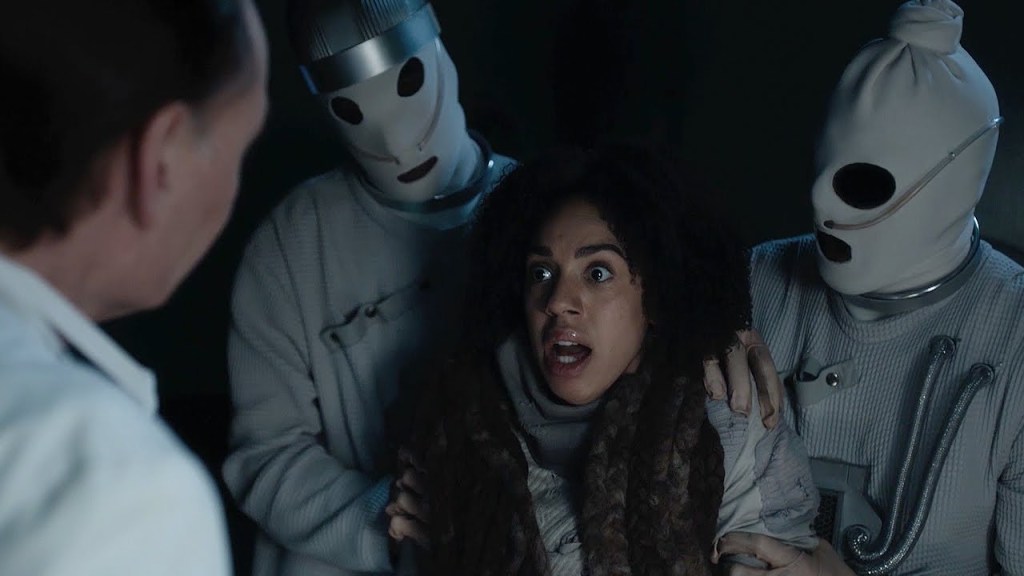
Doctor Who, “World Enough and Time” (2017) — “Pain, Pain, Pain.”
Episode synopsis: In the penultimate episode of Season 10, The Doctor (Peter Capaldi), Bill (Pearl Mackie), Nardole (Matt Lucas), and Missy (Michelle Gomez) answer a distress call from a gigantic colony ship trying to escape the pull of a black hole. Almost immediately, Bill is shot by a terrified passenger, and is taken away by figures in hospital gowns claiming they can restore her. She is brought to the ship’s lower levels, where time moves much slower than the top levels. Because of this, Bill must wait many years for her friends to rescue her.
The scene: Bill awakens in a hospital to a voice saying the word “pain” over and over again. She follows the sound through the mostly abandoned hospital wing until she finds the source: a patient, their head covered in a tightly-fitted cloth that obscures their features, at the end of a row of other patients. A nurse comes to address the patient, and Bill watches from her hiding spot behind a nearby curtain; the nurse turns a knob on the patient’s IV pole and the “pain”s stop. Once the nurse leaves, Bill realizes that the nurse didn’t alleviate the patient’s pain, but rather muted the volume of their suffering. She realizes that every patient in the room is muted.
Talking to Talalay: “Steven Moffat is such a genius,” says Talalay, referring to the script written by then Doctor Who showrunner Moffat. “When you hear about people who had surgery and were awake during the surgery but couldn’t communicate, I think it plays into that fear. So the idea that you would be feeling, that the humanity is still in there but in capable of communicating [is terrifying].”
Unlike the previous, cinematic scenes discussed, this one is part of an ongoing TV show, which means we’ve spent hours with the central character featured. This, perhaps, makes the impending horror that much more affecting.
“You have Bill … knowing that this is going to happen to her,” says Talalay. “So you have the human you care about, seeing what’s going to happen to her, being fully aware of what’s going on and not being able to do anything. And there’s something so elemental about just hearing ‘pain, pain, pain.'”
As a director, Talalay worked to make the hospital ward particularly creepy, using rack focuses across the faces of the patients “as if everyone is faceless.” When creating something for Doctor Who, which is considered a family show and generally airs earlier in the evening in the U.K., Talalay notes that it is important to keep the horror acceptable for a broader audience.
“Initially, we did some stuff with plastic and [the patients] just looked like they were being asphyxiated,” says Talalay. “So there’s definitely a line on Doctor Who where you understand being really scary without being gross. It isn’t gross, but it’s disturbing. And Doctor Who really understands how disturbing it is to be missing any part of your face.”
Talalay and I discussed the pacing of the scene, which takes its time getting to the big reveal.
“The nice thing about doing a Doctor Who episode that Steven wrote is that you’ll be allowed a little bit more time,” says Talalay, adding that, because of this, she didn’t have to cut the tension to get to the next story beat in away that might be required on a different TV show. “Even when they’re outside in the hallway before [Bill goes into the ward], and the ‘in’ and ‘out’ [signs] and just hearing the ‘pain’ [allows] for that tension. And also, I worked really hard. One of intentions on Doctor Who was to try and make all my episodes beautiful and also different.”
Talalay credits one of the central conceits of the episode—that time is passing at a different pace for the Doctor than it is for Bill—as creating an added layer of tension, even when the plot point is not being specifically mentioned. “The slower and the longer you’re downstairs with Bill, the more you think, ‘Upstairs, oh my God, only a minute has passed.'”
Horror lesson: When on a ship experiencing time dilation, use the buddy system.
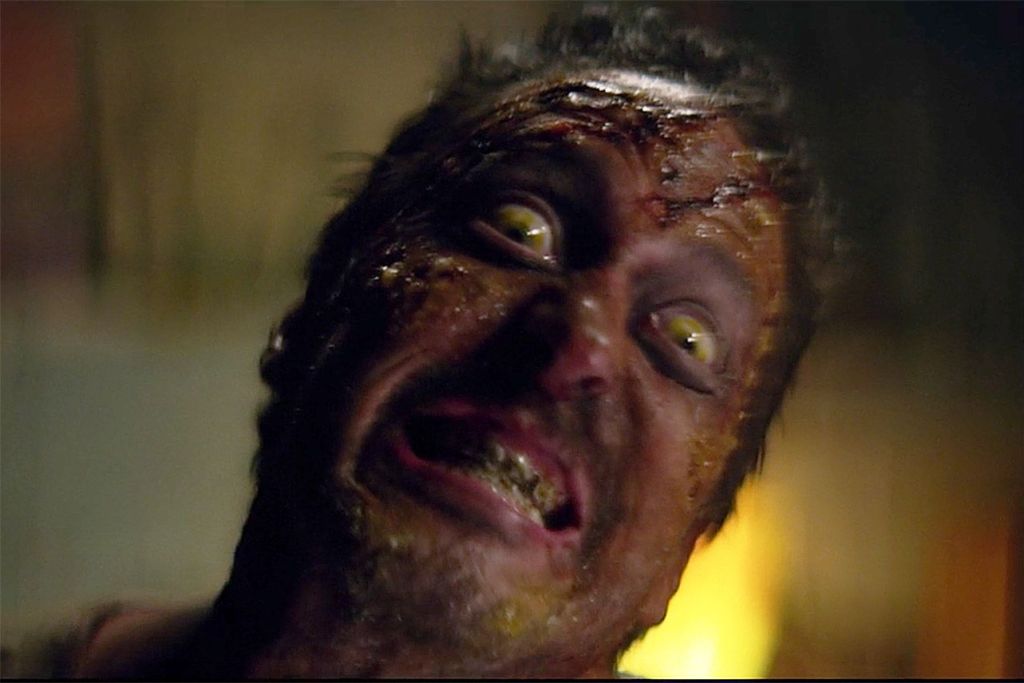
The Chilling Adventures of Sabrina, “An Exorcism in Greendale” (2018) — Uncle Jesse’s Astral Projections
Episode synopsis: Susie’s uncle is possessed by a demon called Apophis, a parasite that is devours its host from the inside and who preys on the fears and insecurities of those it torments. Because Sabrina’s friends Ros (Jaz Sinclair), Harvey (Ross Lynch), and Susie (Lachlan Watson) touched the possessed Jesse (Jason Beaudoin) when they bound him to a bed, they are being plagued by Apophis and are set to be his next hosts once the demon is done with Jesse. You know… just another week in Greendale.
The scene: Apophis uses his control over Jesse to astral project into Harvey, Ros, and Susie’s homes when they least expect it.
Talking to Talalay: Talalay chose this episode of The Chilling Adventures of Sabrina to talk about because her daughter has called it “a whole nother level of scary.” While Talalay notes that she could have chosen the exorcism scene that comes later in the episode, she chose this scene not only because she had a lot of fun filming the moments of demonic surprise, but because of the “textures” she added to the relatively straight-forward horror reveals.
“In the bathroom, for instance … the fan is melting, and the fan is doing things that it shouldn’t be doing,” Talalay says. “And those kind of horror textures make for the whole atmosphere of making it much scarier. You set up the audience to know that they should be scared and they’re going to be scared.”
Elsewhere in the sequence, Talalay gets to use her filmmaking fluency to visually reference other classic horror. The way Harvey lounges on his bed in his crop top is a direct callback (written in the script) to Johnny Depp in Nightmare on Elm Street, the horror franchise where Talalay got her directorial start. In the same scene, Uncle Jesse’s head spins Exorcist-style—”it’s just really, really effective,” says Talalay of the effect. In the grand scheme of the episode, these are all relatively brief and inconsequential moments that Talalay manages to pack with an impressive degree of cinematic depth.
Horror lesson: Don’t move to Greendale.
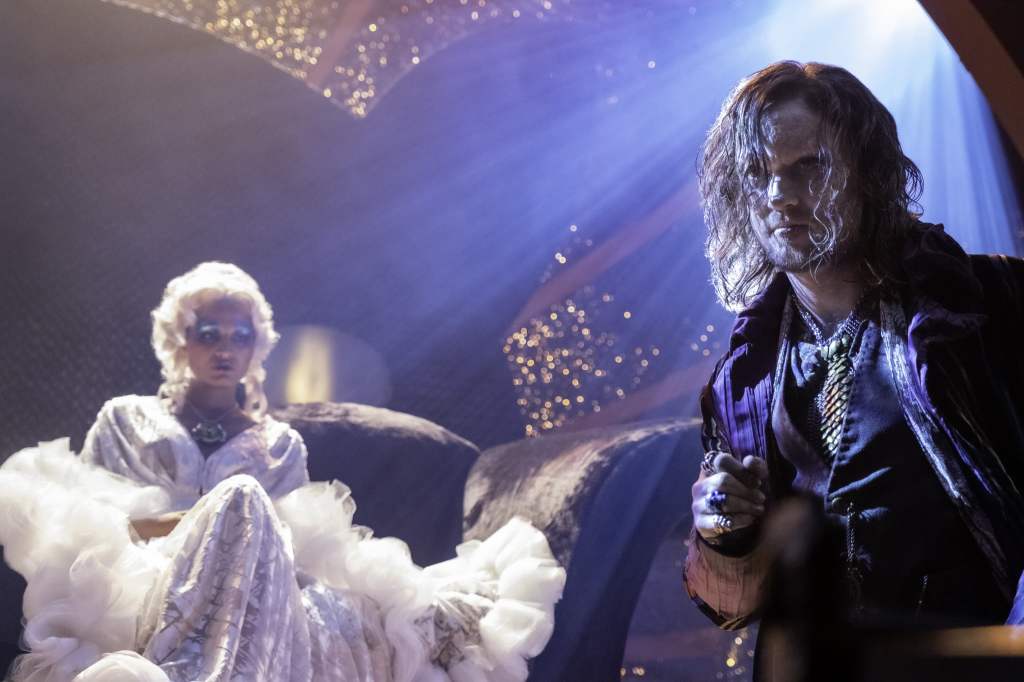
A Babysitter’s Guide To Monster Hunting (2020) — Kelly’s Horror Origin Story
Film synopsis: When her babysitting charge is taken by the Boogeyman (Tom Felton) on Halloween night, teen math genius Kelly (Tamara Smart) discovers a secret society of babysitters whose job it is to protect their kids from the world of monsters.
The scene: In a flashback that begins the movie (and that we get more of later in the movie), we learn that Kelly too was targeted by the Boogeyman when she was just a little girl.
Talking to Talalay: “This was the most difficult and controversial scene we did from the standpoint of ‘How scary can you be?'” says Talalay, who put a lot of thought and had many conversations about where the horror line is when it comes to creating entertainment for kids during the course of making this movie.
“It’s going to be on Netflix, so if you scare kids too much or parents too much in the first minute, then you’re done,” adds Talalay. “On the other hand, we want to entice teenagers … So it was a constant discussion on set.” As a result, Talalay storyboarded the tale of “Kelly’s Origin Story” 17 times in order to get the tone just right. “And then when we were shooting it, there was a lot of discussion, ‘Is this too scary? Is this too scary?’ Which led me to say to the executives frequently, ‘You can’t judge how scary something is until you put the sound and music in.'”
Talalay said she used the example of “the magic of Tim Burton,” specifically The Nightmare Before Christmas, as a way to explain the power of music to shape the audience’s reaction to a scary set of images. While the first test screening for the opening to A Babysitter’s Guide to Monster Hunting was deemed too scary for young kids, Talalay “lightened up the music” to alleviate some of the horror tension.
“It was hard for me not to be scary because it’s part of my vocabulary,” says Talalay. “And it was hard of me not to say, ‘But like Doctor Who‘s family, and it plays at 6:00 on Sunday nights and still, it’s terrifying.’ And Netflix saying, ‘No, we don’t want to be that scary.’ And my absolutely respecting their understanding their audience and their metrics. And then trying to keep the tension and still make it feel family.”
Horror lesson: Pay your babysitter well.
A Babysitter’s Guide to Monster Hunting is now available to stream on Netflix.
